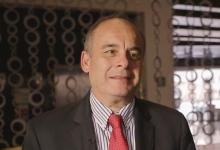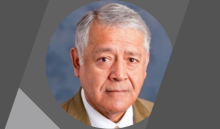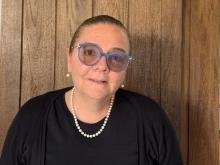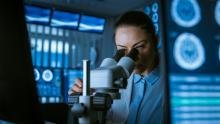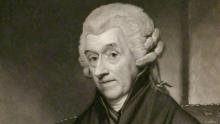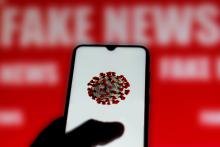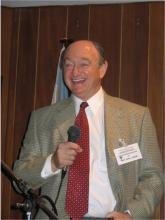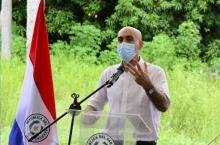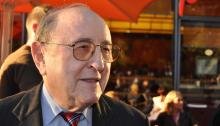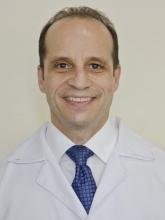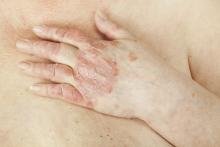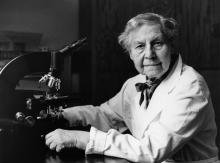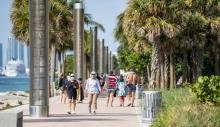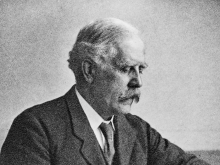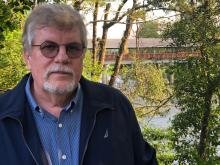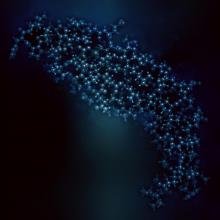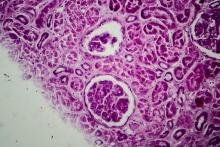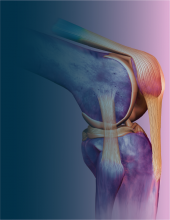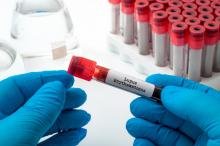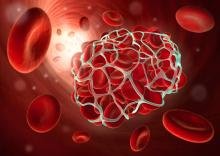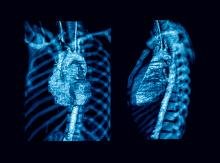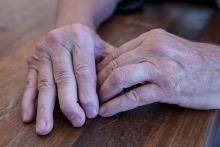By Estefanía Fajardo
An exchange of emails, videocalls, and WhatsApp messages. Everything was done through the use of technology, which has managed to bring us closer during this Covid-19 pandemic and that has allowed us, despite the distance, to be able to meet and communicate with Dr. Adil Samara.
“I graduated in 1959 from the former National Faculty of Medicine of the University of Brazil (today, Faculty of Medicine of the Federal University of Rio de Janeiro), founded in 1808, the second oldest in this country - 10 days after Salvador - Bahia,” he adds, “therefore, 63 years ago.” Samara was born in Araçatuba, state of São Paulo, Brazil, on October 7, 1935.
He thought about going into anesthesiology until he met Professor Israel Bonomo, who told him about the recent discovery of cortisone. From this moment forward, his life was linked to the treatment of rheumatic diseases. (1)
During his story, he tells us that in that moment, very few doctors were interested in rheumatology, mainly because they thought that “it was a very discredited specialty that only consisted in the use of pain relief and anti-inflammatory drugs”.
There was also the colloidal gold - called the base drug - introduced into rheumatology by Jacques Forestier in 1929 at a World Congress of Rheumatology in Budapest. “He himself was not convinced of the efficacy of this drug when his father Henry Forerstier encouraged him to continue using it, seeing for the first time some improvement in the treatment of chronic progressive polyarthritis, the French name,” Samara recalls.
They were both medical assistants at a famous thermal spring spa in the south of France, Aix Le Bains. “Professor Forestier, came to Brazil in 1972 as our guest for a course in spinal radiology and told us that the idea of using gold salts in rheumatoid arthritis was precisely due to their effectiveness observed in tuberculosis in the mid-18th century,” he says.
“I was referred to Gastroenterology at Hospital Escola São Francisco de Assis under the direction of Professor José Paula Lopes Pontes. There were two patients hospitalized in Ward 10 with Rheumatoid Arthritis, and those who passed by did nothing,” he continues in his story. And then he recounts that, one morning, he attended a class by Professor Israel Bonomo on cortisone and sequential derivatives up to dexamethasone. “So, I asked him to come with me to see the two patients. It was already almost 1:00 in the afternoon and on that visit he left at 5:00 in the afternoon.”
Bonomo had just arrived from Cornell University in the United States, considered one of the eight best universities in the world, where he had worked for two years in the service of Professor Freiberg, who introduced colloidal gold to the West.
“At the end of the discussion of those two cases, he asked me if I would like to go into Rheumatology, to which I answered yes. On the next morning I was called by Professor Pontes to his office, and there he asked me the same thing, if I wanted to go into Rheumatology, and after I said yes, he assigned me to attend the outpatient clinic for rheumatic diseases for two mornings each week. It was the beginning of a life that lasts to this day,” he says with precision in his words.
The beginning was not easy, he confesses, “because I moved to Campinas after my internship with Professor Bonomo, mainly because this is where my family lived, and it was less expensive to live there. Although I visited doctors talking about my purposes and hoping they would give me prestige, they kept sending patients with rheumatic ailments to cardiologists, for the residual mitral lesion in rheumatic fever, to family doctors, to pediatricians, for the prophylactic use of penicillin also in this disease, to traumatologists then for the now well-known osteoarthritis, to physiatrists, to physiotherapists, and even to psychiatrists.”
After a while like this, he continues in his story, “a colleague of mine, an ophthalmologist, took me to the Penido Burnier Institute (Ophthalmology Hospital with more than two million patients registered since its foundation at the beginning of this century) and introduced me to everyone saying that I was coming to do a new and instigating specialty, rheumatology”.
In this Institute there was also a physician and pathologist who was very feared by his peers, because of his clinical competence. “There I went to ask of this now deceased colleague to see a case of that super clinician who made an incision in the plantar region next to the hallux and a counter opening also in the plantar region next to the 5th toe. Finally, surprisingly, he rubbed the sole of the injured forefoot, applying Minâncora ointment”.
He says that for the story he did not need to make “the slightest effort” to suspect a gouty crisis. “Believe me, I fell into the sympathy of the genius from Campinas who called me every day to comment on some case of pain and inflammatory signs,” he says humorously.
“Gout was a very rare disease among us, since, in 1940, an article was published about a single case under the title: “Gout is not a Brazilian problem”. So, we stayed 20 years without talking about the disease, which only changed when Dr. Bonomo, in a survey of the whole country, collected 1,800 cases published in the annals of the Italian Congress 1960 Minerva Medica”, Samara points out.
FOCUS
At this point there is a gap in his text. We divide the stories, which are not few, as he admits. He has a lot to say and has already done so on several occasions, but something new always comes to mind, something that changed and something that will remain.
“ There is no lack of stories for someone like me, who has been a professor at one of the most important universities in Brazil for six decades, from doctorate to full professor and emeritus, and who has to his credit as author some articles and co-author in some others in Rheumatology, which I dare not list for fear of arrogance overcoming whatever modesty I still have left, which I strive to have,” he says, adding that he has in his history more than 600 published articles and 2,200 catalogued documents.
In an article published by the Brazilian Academy of Rheumatology, he says that “the most exciting thing is still to provide a cure, even if it can only be achieved a few times; to help them get better, almost always, and always to provide comfort”. (1)
But here comes an important point, in which he does not give that much detail because, as he says, he seeks to remain modest and far from arrogance.
“The discovery of the cortisone pulse occurred accidentally on my Service in 1970 by one of my residents with a dose even higher than that used by Morton Schainberg and Catch Kart published in The Lancet in 1976 (2)”.

Professor Adil Samara and Hilton Seda, PANLAR Punta del Este (Uruguay) 1970.// Credits: Uruguayan Association of Rheumatology.
In our case, - he continues with the story - the patient was a girl in a comatose state from the Bairral Institute of Itapira that was later confirmed of having a diagnosis of Lupus. “Continuous epidural with corticoid was another great contribution in spinal metastases as pain relief until the fatal moment occurred. Also, dosing calcium in synovial fluid before and after the addition of a solvent, sodium citrate, by measuring the difference between the two, has a statistically more consistent propaedeutic value than operator-dependent compensated polarized light microscopy. I don't sell the crystal, no one is allowed to not have crystal, mainly because it dissolves within 96 hours after collection.”
He has a book titled “Many lives, one memory”. It is autobiographical and was released in 2016 and in it he tells the story of a son of Lebanese immigrants, as well as the saga of his family. Samara recounts his youthful adventures. His choice of medicine, his academic life in Rio de Janeiro and how the desire to become a rheumatologist lead him to learn about the history of some of the most important Brazilian rheumatologists. (3)
PANLAR IN HIS LIFE
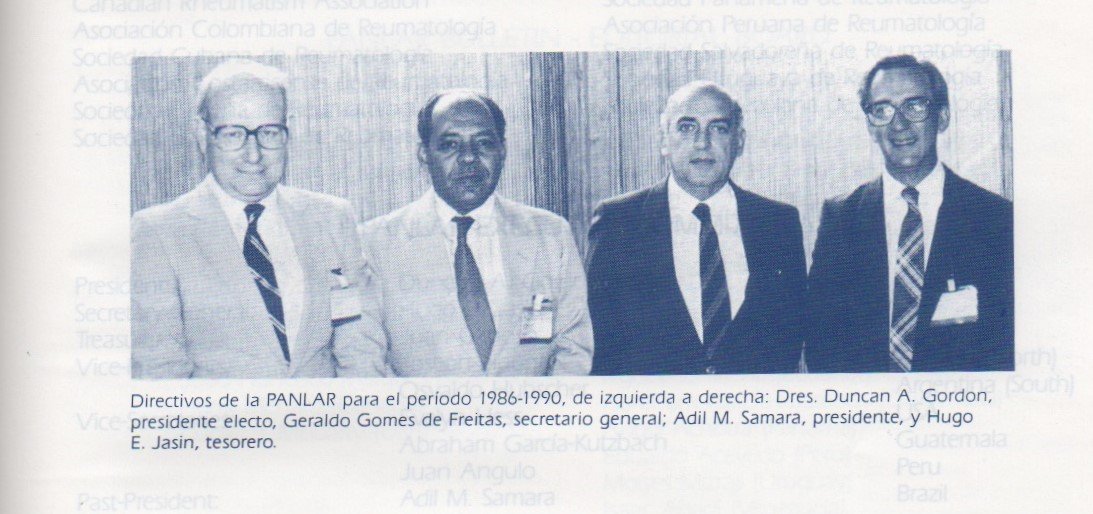
PANLAR directors 1986 - 1990, from left to right: Drs. Duncan A. Gordon, President Elect, Geraldo Gomes de Freitas, Secretary General; Adil M. Samara, president, and Hugo E. Jasin, treasurer. // Credits: Reference 4
Samara has been president of PANLAR (1986-1990); secretary general and vice-president of llar, (1986-1990); president of the Brazilian Academy of Rheumatology (2002-2004), in addition to being president of the conference “Gold Medal-Joseph Bunin Prize”, awarded by Professor Morris Ziff at ACR, in 1982. (1)
In PANLAR's history, Samara has a special place. This is reflected in the historical book when he refers to the fact that, in 1990, shortly before the end of his term of office, Dr. Samara was able to listen to the signs of change that were beating within PANLAR.
Perhaps he was thinking of the regional headquarters he helped to found in Brazil when he told the organization's Assembly that it was necessary to face a new challenge. In front of hundreds of rheumatologists, Samara took the podium: “So that in the future - he said in a slow voice - the discussions of this League may be more inclusive, allow me to suggest to future generations the possibility of creating two leagues, one in the North and the other in the South of the continent, or, if you wish, one made up of Latin countries and the other of Anglo-Saxon countries. I am proposing a regional division based on geography and language, not a cultural exchange. In other words, it would seem to me much easier and more feasible to administer two leagues in the great continent in which we reside” (4).
These reflections contributed to the subsequent reorganization of PANLAR with the creation of the four geographic regions into which the League is currently divided.
I have the fondest memories of PANLAR, he says, “especially in terms of nostalgia for those who are no longer with us, and who left excellent contributions to the new generations so that they can continue studying, transmitting their discoveries, and educating others”. In addition, in 2008 he received the “Master of Rheumatology PANLAR” distinction, which is awarded to members whose scientific contribution and/or recognized academic work has contributed significantly to the development of rheumatology in their country.
He adds that there is no end to progress, “especially in our case, due to the extraordinary complexity of our diseases even in the face of the most recent advances”.
And he ends his story with this message to the “dear and incomparable readers”:
“My soul is there, the infundibulum of the pulmonary artery as the ancients believed it existed. Wherever I went, I carried the name of my country, playing the most important roles in the Brazilian Society of Rheumatology in PANLAR, ILAR, etc.,” he concludes.
SOURCES
- Adil Muhib Samara, https://reumatobr.com.br/team/adil-muhib-samara/
- Cathcart E, Scheinberg M, Idelson B, Couser W. Beneficial effects of methylprednisolone “pulse” therapy in diffuse proliferative lupus nephritis, “The Lancet”, 1976, available at: http://dx.doi.org/10.1016/s0140-6736(76)91272-1
- Professor Samara, Muitas vidas uma só memoria, https://hc.unicamp.br/professor-samara-lanca-livro-muitas-vidas-uma-so-memoria/
- PANLAR through its history, Caballero CV (Editor), http://www.panlar.org/sites/default/files/historia_de_panlar_75_anos_digital.pdf


















